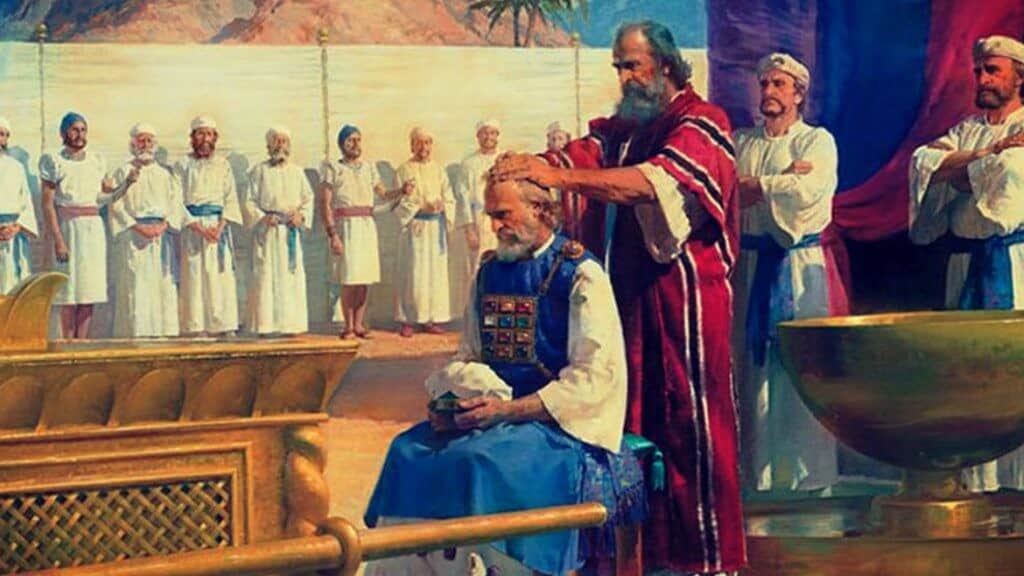Saints and Sinners: The Duality of Aaron’s Family
Nadab and Abihu, both from Aaron’s lineage, took their censers, lit them, and added incense. But, they did not use the fire approved by the Lord, thus breaking His instructions.
Because of this, a flame from the Lord’s presence struck them down. Others took their bodies, still in priestly clothes, out of the camp.
Moses told Aaron that this sad event aligned with the Lord’s words: “I will show my holiness to those near me, and I will gain honor from the people.”
Deeply upset by the tragic event, Aaron skipped a key ceremony. Yet, his reasoning convinced Moses and perhaps even the Lord to spare him from further punishment.
Later in Hazeroth, Aaron and his sister Miriam questioned Moses about his marriage to a Cushite woman. They asked, “Has the Lord spoken only through Moses? Hasn’t He spoken through us too?” Yet, many knew Moses for his unmatched humility.
Leadership and Legitimacy: Moses and Aaron’s Challenges during the Rebellion
Suddenly, the Lord summoned Moses, Aaron, and Miriam to the Tent of Meeting. As they arrived, the Lord appeared at the entrance in a cloud column. After calling Aaron and Miriam, He cautioned them:
“Understand this: If a prophet emerges among you, I reveal myself in visions or dreams. But with Moses, my loyal servant, it’s different. I speak to him directly, and he sees me as I truly am. Why did you challenge Moses?” After saying this, the Lord left in anger.
When the cloud lifted, Miriam had leprosy, her skin as white as snow. Seeing this, Aaron asked Moses for mercy. Moses prayed to the Lord for her healing. The Lord answered, saying Miriam must stay isolated for seven days before rejoining the people.
The people waited seven days, then left Hazeroth for the Paran desert.
Some descendants of Reuben and other Levites grew jealous. Around 250 opponents, led by Korah, a relative of Moses and Aaron, and Dathan, Abiram, and On from the Reuben tribe, protested.
The severe punishment of these rebels did not calm the crowd but instead sparked more anger toward Moses and Aaron. Both sought refuge in the Tabernacle when the Lord’s glory appeared. The Lord told Moses of His plan to punish the rebels. Then, a severe plague hit the crowd, claiming many lives. Moses directed Aaron to use incense to intervene, and the plague stopped.
To further establish Aaron’s position as High Priest, God set a test. Moses placed rods from the Twelve Tribe leaders in the Tabernacle, each with its leader’s name.
Only the rod that sprouted would identify God’s chosen one. The next day, Aaron’s rod not only sprouted but also bloomed and bore almonds. This act confirmed Aaron as God’s chosen. His rod remained in the tabernacle as an everlasting reminder.
From Kadesh to Mount Hor: Aaron’s Final Days
Thirty-seven years later, the Hebrews camped at Kadesh. There, Aaron’s sister Miriam passed away. The thirsty community blamed Moses and Aaron.
Following God’s directive, Moses struck a rock with his rod, producing water. But God was unhappy with Moses’s actions and words, declaring that neither he nor Aaron would enter the Promised Land.
Four months later, at Mount Hor on Edom’s border, Aaron’s fate was sealed. God told Moses to climb the mountain with Aaron and his son Eleazar. In full view of the people, Aaron passed his priestly garments to Eleazar and died. A thirty-day mourning period followed.
Regarding Aaron’s descendants, he had four sons with Elisheba. The elder two, Nadab and Abihu, died without heirs. However, from his other sons, Eleazar and Itamar, came many generations. Notably, John the Baptist descended from this line, preceding the Messiah and praised by Jesus.
Lastly, Aaron died on Mount Hor, and his son Eleazar succeeded him. A Muslim legend tells of Harun and Moses ascending Mount Hor together, unsure who would die first. In it, they find a perfect coffin for Harun, who then ascends to heaven.





